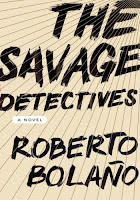As subtly as possible to avoid the inevitable dirty looks from the eavesdropping-phobic, I've squinted and strained this week to read the distant titles of novels that my fellow commuters have brought along for their rides. Many are the unsurprising, current New York Times Bestsellers, while others are unexpected and compelling finds that may just inspire additions to my 2010 booklist.
I spy with my eye ... something old, something new, something borrowed from the Brooklyn Public Library, something blue ...
 Boomsday
BoomsdayIt's the end of the world as we know it, especially if bloggers are setting the national agenda. In his latest novel, Buckley imagines a not-so-distant future when America teeters on the brink of economic disaster. Buckley's heroine is "a morally superior 29-year-old PR chick" who blogs at night about the impending Boomsday budget crisis. And her name? Cassandra. "Cassandra is a metaphor for catastrophe prediction. It's what I do." (Publishers Weekly)
 The Conscience of a Liberal
The Conscience of a LiberalIn this New York Times bestseller, Paul Krugman, today's most widely read economist, examines the past eighty years of American history. Seeking to understand both what happened to middle-class America and what it will take to achieve a "new New Deal," Krugman has created his finest book to date, a "stimulating manifesto" offering "a compelling historical defense of liberalism and a clarion call for Americans to retake control of their economic destiny" (Publishers Weekly).
 Digital Fortress
Digital FortressOn page 1, the protagonist, lately dismissed from The National Security Agency (NSA), drops dead of a supposed heart attack. Though dead, he enjoys a dramaturgical afterlife in the form of his computer program. Digital Fortress creates unbreakable codes, which could render useless NSA's code-cracking supercomputer called TRANSLTR, but the deceased programmer slyly embossed a decryption key on a ring he wore. Pursuit of this ring is the engine of the plot. (Gilbert Taylor)
 The Fountainhead
The FountainheadOn the surface, The Fountainhead is a story of one man, Howard Roark, and his struggles as an architect in the face of a successful rival, Peter Keating, and a newspaper columnist, Ellsworth Toohey. But the book addresses a number of universal themes: the strength of the individual, the tug between good and evil, and the threat of fascism. The confrontation of those themes, along with the amazing stroke of Rand's writing, combine to give this book its enduring influence. (Amazon)
 Four to Score
Four to ScoreHalf-Hungarian, half-Italian and all-Jersey, Trenton's best-known bounty hunter, Stephanie Plum, is a raucous delight. When Maxine Nowicki, charged with stealing her boyfriend's car, skips her court appearance, she's fair game to be hauled in. Before the case is over, Stephanie will invade an Atlantic City casino with her intrepid allies: Grandma Mazur, Lula, and Sally, a seven-foot transvestite rock singer. Although Stephanie is the bounty hunter, she's the only one who isn't armed. (Publishers Weekly)
 The Giant's House
The Giant's HouseA platonic and achingly poignant love affair between a young man who suffers from gigantism and a librarian who is 14 years his senior is the focus of this remarkable debut novel. Narrator Peggy Cort, spinster librarian, first becomes aware of James Sweatt when he comes into the library with his grade-school class, already 6'2" at age 11. Peggy finds herself drawn to the gentle, lonely young man, because he fills a void in her own life and because of James's loving but eccentric family. (Publishers Weekly)
 The Savage Detectives
The Savage DetectivesThe major work from the great Chilean-born novelist Bolaño. In early 1970s Mexico City, young poets Arturo Belano and Ulises Lima start a small, erratically militant literary movement, the Visceral Realists, named for another, semimythical group started in the 1920s by the nearly forgotten poet Cesárea Tinajero. Bolaño fashions an engrossing lost world of youth and utopian ambition, as particular and vivid as it is sad and uncontainable. (Publishers Weekly)
 A Thousand Splendid Suns
A Thousand Splendid SunsHosseini's riveting story is an in-depth exploration of Afghan society in the three decades of anti-Soviet jihad, civil war, and Taliban cruelty. He impels us to empathize with and admire those most victimized by Afghan history and culture—women. Mariam, a 15-year-old bastard, is married off to 40-year-old Rasheed, who abuses her brutally, especially after she has several miscarriages. At 60, Rasheed takes in 14-year-old Laila, and the two wives form a strange alliance. (Publishers Weekly)
 The Wasp Factory
The Wasp FactoryFew novelists have ever burst onto the literary scene with as much controversy as Iain Banks in 1984. The Wasp Factory is distinguished by an authentically felt and deftly written first-person style, delicious dark humor, a sense of the surreal, and a serious examination of the psyche of a childhood psychopath. Most readers will find that they sympathize with Frank, despite his three murders. It's a classic of contemporary horror. (Fiona Webster)
 The Year of Living Biblically
The Year of Living BiblicallyWhat would it require for a person to live all the commandments of the Bible for an entire year? That is the question that animates this hilarious, thought-provoking memoir. Jacobs didn't just keep the Bible's better-known moral laws, but also the obscure and unfathomable ones. Throughout his journey, he is a generous and thoughtful participant, lacing his story with funny cultural commentary as well as nuanced insights into the impossible task of biblical literalism. (Publishers Weekly)


No comments:
Post a Comment